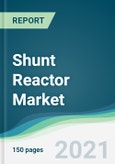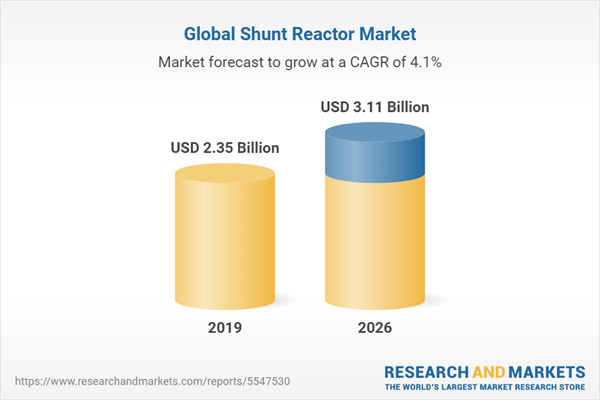Market Drivers
As nations continue to progress, the power sector becomes an indispensable part of the economy. The industrial and commercial segments rely largely on the uninterrupted supply of electricity. Thus, the increasing demand for electricity, upgrading of the aging technology in developing countries, and the addition of high voltage transmission lines are the driving factors for the shunt reactor market. The industrialization and urbanization trends in the developing nations are further aiding the market in those economies.
By type, the oil-immersed segment is expected to record the highest growth owing to the increase in the demand for electricity and rising investments in the T&D infrastructure. By end-user, the electric utility segment is projected to have the largest market during the forecast period as the power sector continues to expand coupled with industrialization in developing nations. The Asia-Pacific region is showcasing robust growth in the market as economies like China and India are relentlessly expanding their power generation and undertaking high investment.
Growth Factors
Upgrading the power grid to the 21st century
The power and utility sector in developed nations like the United States, the United Kingdom, Germany, have been relying on outmoded technologies which are insufficient for the current needs of power in the industrial districts. Additionally, the commitment to the net-zero transmission of greenhouse gases under Biden's campaign platform by 2050 and a $2 trillion investment to help equitably achieve this target will bring in further transformation in the power grid technology. Thus, investments in the transmission and distribution infrastructure would see significant growth in the shunt reactor market.
Implementation of smart grid technology
Modernizing the grid through the use of cutting-edge technologies, equipment, and controls that communicate and work together to deliver electricity more reliably and efficiently can greatly reduce the frequency. Variable shunt reactors provide regulation capability and, thereby, system benefits in terms of power quality, optimized grid operation, and the possibility of interacting with other regulating devices. The developed nations are already maturing their implementation of smart grids while the concept is relatively new in the developing countries with immense potential. Hence, smart grid technology adoption will provide a growing opportunity to shunt reactors to increase their market size.
Restraints
As the power and utility segment continues to grow, the shunt reactor market has been benefitted largely during this period. But the development of alternative forms of technology like Flexible AC Transmission System, High-Voltage Direct Current System, and others, in terms of effective performance and speed and are gradually paving the way for these alternative options. These alternatives may bring in a threat to the shunt reactor market.
Impact of COVID-19 on the Shunt Reactor Market
The power, utilities & renewables companies are keeping their assets online and providing safe, reliable supplies of electricity and natural gas during these times. But there has been a shortage of capital, low investment drives, delaying of proposed projects as several restrictions were imposed worldwide which led to a minimal contraction of demand for shunt reactors. However, the market is expected to rebound once restrictions are lifted and industrial operations restart at full capacity.
Competitive Insights
The market leaders in the Global Shunt Reactor Market are ABB, Siemens AG, General Electric Company, Fuji Electric Co. Ltd, Nissin Electric Co. Ltd, Zaporozhtransformator, Mitsubishi Electric Corporation, CG Power and Industrial Solutions Limited, Toshiba Energy and Solutions Corporation, Hyosung Heavy Industries, The key players in the market implement growth strategies such as product launches, mergers, and acquisitions, and others. For instance,
- Japan's Hitachi had completed its acquisition of a majority stake in ABB Power Grids worth up to $7.8 billion in 2020.
- GE Renewable Energy's Grid Solutions business in 2021 received multiple orders to supply 765 kV transformers and reactors in India.
- Murugappa Group firm Tube Investments of India Ltd (TII) has acquired a controlling stake and now holds 50.62 percent of CG Power and Industrial Solutions Limited in 2020.
- In 2019, Hyosung Heavy Industries acquired Mitsubishi's American electric power production plant in Tennessee for $46 million.
Segmentation:
By Type
- Oil-immersed
- Dry Type
By End-User
- Electrical Utilities
- Industry Verticals
By Geography
- North America
- USA
- Canada
- Mexico
- South America
- Brazil
- Argentina
- Others
- Europe
- Germany
- France
- United Kingdom
- Italy
- Spain
- Others
- Middle East and Africa
- Saudi Arabia
- UAE
- Israel
- Others
- Asia Pacific
- China
- Australia
- Japan
- South Korea
- India
- Thailand
- Taiwan
- Indonesia
- Others
Table of Contents
Companies Mentioned
- ABB
- Siemens AG
- General Electric Company
- Fuji Electric Co. Ltd.
- Nissin Electric Co. Ltd.
- Zaporozhtransformator
- Mitsubishi Electric Corporation
- CG Power and Industrial Solutions Limited
- Toshiba Energy and Solutions Corporation
- H
Table Information
| Report Attribute | Details |
|---|---|
| No. of Pages | 150 |
| Published | December 2021 |
| Forecast Period | 2019 - 2026 |
| Estimated Market Value ( USD | $ 2.35 Billion |
| Forecasted Market Value ( USD | $ 3.11 Billion |
| Compound Annual Growth Rate | 4.1% |
| Regions Covered | Global |
| No. of Companies Mentioned | 9 |









